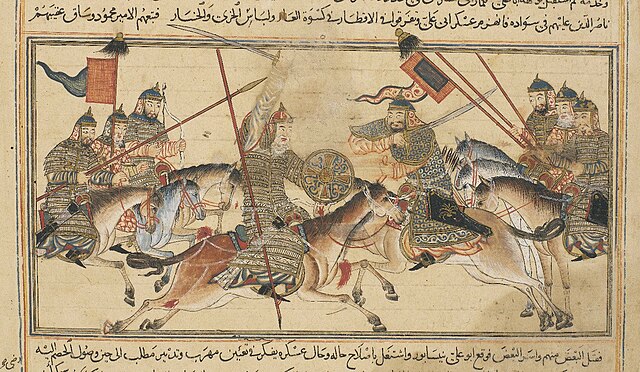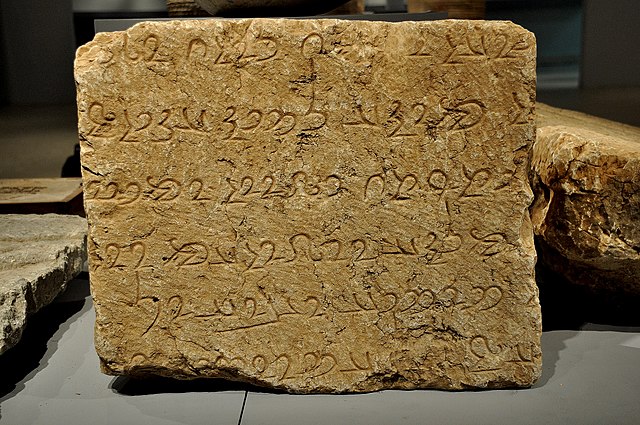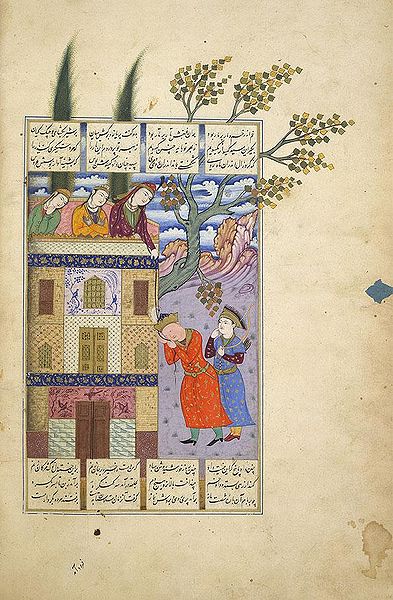The Ghaznavid dynasty or the Ghaznavid Empire was a Persianate Muslim dynasty and empire of Turkic mamluk origin, ruling at its greatest extent, large parts of Iran, Khorasan, and the northwest Indian subcontinent from 977 to 1186. The dynasty was founded by Sabuktigin upon his succession to the rule of Ghazna after the death of his father-in-law, Alp Tigin, who was an ex-general of the Samanid Empire from Balkh.
Sultan Mahmud and his forces attacking the fortress of Zaranj in 1003 CE. Jami al-Tawarikh, 1314 CE.
Ghaznavid portrait, Palace of Lashkari Bazar. Schlumberger noted that the turban, the small mouth and the strongly slanted eyes were characteristically Turkic. 11th century
Fight between Mahmud of Ghazni and Abu 'Ali Simjuri of the Samanid Empire. Jami' al-tawarikh, 1306-1314
Ghaznavid fortress of Lashkari Bazar in Lashkargah, ancient Bost, southern Afghanistan. It was founded by Mahmud of Ghazni in 998-1030 CE.
Persian, also known by its endonym Farsi or Parsi, is a Western Iranian language belonging to the Iranian branch of the Indo-Iranian subdivision of the Indo-European languages. Persian is a pluricentric language predominantly spoken and used officially within Iran, Afghanistan, and Tajikistan in three mutually intelligible standard varieties, respectively Iranian Persian, Dari Persian, and Tajiki Persian. It is also spoken natively in the Tajik variety by a significant population within Uzbekistan, as well as within other regions with a Persianate history in the cultural sphere of Greater Iran. It is written officially within Iran and Afghanistan in the Persian alphabet, a derivative of the Arabic script, and within Tajikistan in the Tajik alphabet, a derivative of the Cyrillic script.
An Old Persian inscription written in Old Persian cuneiform in Persepolis, Iran
Middle Persian text written in Inscriptional Pahlavi on the Paikuli inscription from between 293 and 297. Slemani Museum, Iraqi Kurdistan.
Ferdowsi's Shahnameh
Kalilah va Dimna, an influential work in Persian literature








